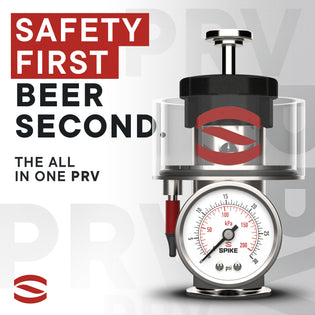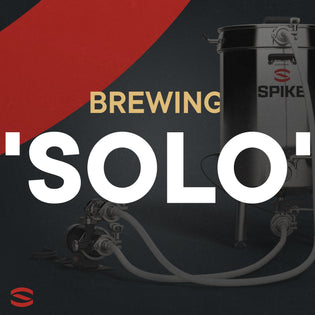By Matt Dailey
Hops are flowers, or cones, that typically grow on a vine of the female hop plant. Hops are used for bittering, flavor, aroma, and also help preserve beer. They are what makes beer-beer. Some experts say that if beer doesn’t include hops that it’s not beer. Traditionally, it was thought hops only added bitterness to beer. However, over time we’ve come to use hops differently and now they lend themselves to flavors of citrus, resinous pine, earthiness, and more. Not only do they offer these flavors and aromas but hops have been thought to lend themselves to stability. Most people probably know the story of the British sending their beer to India in the 1700s. They added more hops to lengthen the shelf life of the beer for its long voyage across the world. Of course, this is how you now get the name India Pale Ale (IPA). Hops have long played an important role in many aspects of brewing.

The Role Of Hops In Beer Flavor And Preservation
Before hops, brewers would add a few different herbs to balance the sweetness of beer. While it was common practice to use these herbs, someone somewhere did a homebrewing experiment that has lasted centuries. They added hops to their wort! These early varieties were probably one of the noble varieties we now rely on (more on noble hops later). Early Europeans knew that hops added a great flavor to their beer, and eventually realized it had properties to help lengthen the shelf life too.
The History And Evolution Of Hops In Beer Brewing
Hops potentially originated in Asia and have been grown for a very long time on Earth. Some scientists suggest hops originated over one million years ago. Beer is roughly 9,000 years old, if not older, and although hops are old, they’re relatively new to brewing. The Smithsonian credits monks in Germany for being the first individuals to use hops between 700 and 800 CE. That’s only thirteen hundred years of beer with hops in it! While it sounds like a long time, it’s not in the grand scheme of history. Prior to hops, brewers used herbs to balance the sweetness in their malt beverages. They called this beverage Gruit.
Following the turn of century in the year 1000 CE, hops became more common and by 1516 they were law in Germany. Reinheitsgebot, the beer purity law, said beer could only be made of water, malt, and hops. Yeast of course was not known at this time so it wasn’t included in the original law. This law put hops on the map for good. From there forward, you couldn’t get a beer without it in that part of the world, which grew in popularity.
Hops were in very high demand in much of Europe throughout the 1600s and 1700s. This was due to the increased demand in beer and the fact that they needed to preserve it. The demand for beer continued to increase as the water was unsafe to drink in much of the world. It needed to be boiled and unbeknownst to them, boiling the wort killed bacteria in the water. As 1870 approached and Louis Pastur developed the process of Pasteurization, the demand for hops decreased.
In the late 1800s, scientists came to understand alpha acids and their link to be the main bittering agent in hops. After 1900, scientists and growers started to find a way to increase alpha acids in hops as you could increase your yield without growing more hops. Following this discovery, many growers began to experiment with varieties and cross pollination.
Hop yards in New York were booming in 1850 and around this time, hop fields were being established in Oregon and Washington. Bringing science and geography together meant developing mold resistant, higher alpha varieties, in optimal growing locations such as Yakima Valley in Washington and the Willamette Valley of Oregon. Throughout the 20th century, many brewers relied on varieties like cluster, Fuggle, and hallertau as their go-to varieties. It wasn’t until the 1970s and Sierra Nevada Pale Ale that we saw varieties such as cascade come along and become popular.
Today brewers are concerned with varieties that lend themselves to high flavor and aromatics. Citra, Mosaic, Simcoe, and Galaxy all come to mind. These are newer varieties. They all took a decade or longer to come to the market as breeders work hard on finding varieties that meet alpha acid requirements, offer natural deterrence to mildews, and are flavorful and aromatic. Maybe the next great variety is just being planted as you read this!
A Guide To The Different Varieties Of Hops And Their Unique Characteristics
Hops come in over 150 varieties, each of which has its own characteristics. There are different sub species of hops across the globe. Hop growers and scientists have broken down these sub species into even more specific characteristics such as; aroma hops, flavor hops, bittering hops, dual purpose hops, noble hops, and high-alpha varieties. These categories become a little easier to navigate once you use hops more and familiarize yourself with their uses. I’m not an expert by any means on this subject, but it provides a brief overview of how so many hops can be used in various ways to help make you a better brewer.
Popular Hop Varieties For Ales And Lagers
Ales and lager hops can vary. When you think of lager beer, you think of clean, crisp, and light beer. Nothing in these beers is generally over-the-top. Lagers are traditionally brewed with Noble Varieties of hops. These include Hallertau Mittelfruh, Saaz, Tettnanger, and Spalt. These varieties are traditional to European brewing and were some of the first to be used in beer. They offer subtle flavors that can be earthy, grassy, add spice, and mild citrus flavors. Lager hops are great to use throughout the boil at any point and occasionally dry hop. They’re often lower alpha acids, meaning their oil contents are lower than hops that may be used in ales.

When you think of ale, a more flavorful, fuller bodied beer comes to mind. Whether it’s a pale ale, IPA, or stout. They’re more bold and flavorful than most lagers. Some varieties of ale hops originated in the U.K. These UK varieties serve as a parent to many of the main hops used in American Brewing today. Fuggle or Golding hops are at the forefront of lineage for varieties like Citra, Centennial, Chinook, Cascade, and Nelson Sauvin. Today, the hops used in many ales brewed in the United States are often grown in the Pacific Northwest of The United States, Australia, and New Zealand. These hops are usually much higher in alpha acid than noble varieties. Usually 8-20% alpha acids can be found in varieties such as; Citra, Mosaic, Simcoe, Cascade, Columbus, Galaxy, Nelson Sauvin. These hops all offer flavors that can range from fresh fruit, dank pine, bright earthiness, and white grape.
These newer American, Australian, and New Zealand Varieties are usually used for later additions in beer, whether it be late boil additions, whirlpooling, or dry hopping. These are all wonderful ways to utilize these varieties. Don’t let these traditional uses hold you back from using a new world variety of hop in a lager or a noble hop in an ale!
The Flavor And Aroma Profiles Of Hops: Citrusy, Floral, Earthy, And More
Hops have a plethora of flavors and aromas. Pine, fresh fruits such as pineapple, melon, berry, and orange come to mind. There are earthier hops such as Nugget that offer great bittering qualities and late addition characteristics. Since hops are grown in different locations you may get a variety like Simcoe that can be fruity, piney or just downright dank. Citra is always a go-to for citrus flavors. Recently, Mosaic has been very blueberry and slightly dank. These varieties are widely used in brewing and change year-to-year due to weather, sunlight, oil content, and terroir of the regions they’re grown.
The Role Of Hops In The Flavor And Aroma Of Beer
As discussed before, flavors and aromas are driven by hop additions after the 30 minute mark. Today's brewing world is really driven by IPAs. Whether it be west coast IPAs or hazy IPAs, they probably include late additions if not whirlpool additions and dry hop additions. Those hops contain oils, each of which has its own flavors and aromas and are imparted at different temperatures. Scott Janish has done tons of research on this and if you’re really interested in it, I’d recommend reading his book, The New IPA: A Scientific Guide to Hop Aroma and Flavor and check out his website.
As a general rule, if I’m really looking to drive flavors and aromas in my IPAs, I whirlpool for 30 minutes with 1.2-1.5 ounces of hops per gallon. This imparts a little bitterness but overall drives the fruity flavors you want. I then dry hop one or two times depending on the beer.
I’d say standard operating procedure here is to add at least one dry hop right as fermentation is ending. Studies have shown that “hop creep” can occur if added post fermentation. This is where your beer starts to re-ferment due to enzymes in the hops reacting with unfermented carbohydrates and while yeast is still in suspension in the beer. In order to avoid this, you can just lower the temperature of your beer to below that of fermentation temp of your yeast. Make sure you have positive pressure on your fermenter when lowering the temperature of the beer as it will suck in any sanitizer you have in an airlock. Next, you’ll want to release that pressure and purge your fermenter with CO2 so you don’t pick up any oxygen. Finally, toss in your hops, add pressure back to your tank and leave the beer at your desired temp until you want to cold crash. The temperature you choose to dry hop can be 60°F, if it’s an ale, or lower. I have slightly experimented with this. I’ve done it at 60°F and as low as 40°F. The results will yield different flavors depending on hop variety. Experiment with your favorite varieties and see what you come up with!

Fresh Hops Vs. Pellet Hops
Fresh hops are exactly that. Fresh, right off the vine. Also called wet hops. They deliver a unique flavor to beer that can only be found in using freshly picked hops. They’re bright and saturated with the oils that you want in your beer, but you may not know the alpha acids of fresh hops. Once these hops are harvested, they must be used immediately to get the fullest potential in flavors and aromas out of them. More than a few days' time could really impact the quality of the hops.
Pelletized hops have gone through the drying and pelletizing process and if stored properly will last more than a year in your freezer. These hops are consistent in alpha acids in a harvest year so you can store them and rely on their bitterness/flavors. Pellets often come in every variety possible, whereas fresh hops are limited in available variety.
Homebrewers should jump at the opportunity to use fresh hops if they get the chance. My advice to you is to create a hop-back in your mash tun or use a muslin bag to steep your fresh hops in your hot wort before you transfer to your fermentation vessel. Also, I’d recommend using 5-6 times the amount of fresh hops as you would pellets.

How To Properly Store And Use Hops For Optimal Brewing Results
Just like milk, eggs, and cheese, hops are perishable. They must be stored in ideal conditions in order to remain fresh. You are trying to preserve the potency of your hops. Alpha-acids degrade over time and you want to make sure you are using your hops in a timely manner or storing them properly. There are a few different ways you can help preserve your hops and protect your hops against spoilage.
Hop Storage Methods: Vacuum Sealing, Freezing, And More
Hop companies today are shipping their hops in nitrogen purged, vacuum sealed, light resistant, resealable containers. They are also stored in a freezer. There are a couple takeaways that you can learn from just from this quick analyzation of packaging. I’m sure you can’t purge your containers with nitrogen, but you could purge them with CO2. Next you should invest in a vacuum sealer. This will help remove oxygen from the bag you’re storing your hops in. If you don’t own a vacuum sealer, just make sure to squeeze as much air out of the bag as you can. Hopefully your hop grower or company you buy your hops from sends them in a resealable bag or container for this method to be effective. Secondly, store them in a freezer! Unopened hops can be stored for up to five years. Once you open your hops you could increase the storage from 6 months to 1-2 years if you’re properly re-packaging your hops!
Matt Dailey lives in Titusville, Pennsylvania and is a high school emotional support teacher. He has a bachelor's degree in history from Southern Illinois University and a Masters in Special Education from Slippery Rock University. He and his wife have 2 boys, ages 4 and 1. If he’s not spending time with his family or brewing and the weather allows, you can find him on the golf course.






